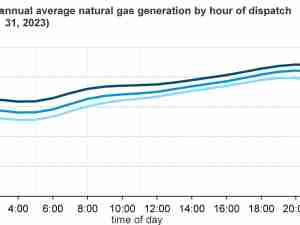The dual imperatives of decarbonization and energy security are driving up demand for clean energy and straining low-carbon supply chains.
Low carbon technologies' dependence on critical minerals and key metals is a supply vulnerability.
The supply of these materials is concentrated across a few countries, many of which face a myriad of economic, political, or geopolitical uncertainties.
Material Dominance: Input cost risks in the medium term
The political climate in major copper exporters Chile and Peru casts a shadow of uncertainty over the global supply of these important metals.
The Democratic Republic of Congo, which accounts for 70% of the world's cobalt, faces protracted civil unrest, while China holds the key to polysilicon and rare earth element supply, such as Neodymium.
Lithium also has a heavily concentrated supply chain. Chile and Australia together make up more than 80% of the mining capacity and China dominates the refining landscape.

Efficiency gains in material usage may alleviate some of the concerns that arise from the lack of geographical diversification, but manufacturers will still have treacherous waters to navigate to avoid potential price spikes and reduce reliance on fair-weather suppliers.
Policies such as the Unites States' Inflation Reduction Act are a step in the right direction for safeguarding supply, especially of nickel, lithium, and rare earth elements, whether from domestic sources or countries that have a free trade agreement with the US.
The emphasis lies in securing supply for these materials in the mid-term as domestic supply chains are ramped up.
It will be some time before the market impact of the legislation is fully materialized.
The economics of recycling are improving due to technological improvements, regulatory and tax incentives, and expected material supply tightness could make circular economies feasible in the mid-term, potentially easing some supply bottlenecks.
Recycling of battery materials and solar panel components, for example, can act as an additional supply buffer for materials such as lithium, polysilicon, and copper.
Near term pricing
Input cost drivers do not paint a complete picture of the market as costs rarely translate directly into final prices.
The disconnect between costs and prices exists in part due to varying lead times and the gap between procurement and delivery, as well as shifting market dynamics and evolving price strategies.
The time gap between material procurement and execution depends upon the price hedging instruments such as forward and futures contracts.
China's re-opening could potentially add upward pressure on commodity prices due to a demand resurgence.
Prices for copper and aluminum witnessed some spikes in January but are now cooling off.
There are signs of recovery in China as the Purchasing Managers Index (PMI) for manufacturing increased from 47 to 50.1 in January signaling growth in the sector for the first time since September.
Chinese Producer Price Index (PPI), however, registered a month-over-month decline from December last year suggesting the demand spurt from the reopening is yet to fully make its way upstream.
Wind
Wind equipment manufacturers faced the heat of high commodity prices and shipping rates throughout last year.
Even though input costs such as steel prices and power prices are past their peak, a relief of equal measure may not materialize for component pricing as the effects of cost inflation linger and hard-pressed suppliers attempt to claw back their profit margins with price hikes.
The entry of Chinese OEMs into the market could play havoc with recovery and shift the pricing dynamic away from western equipment suppliers.
Solar
Polysilicon prices rose 110% on average from 2021 to 2022.
Prices are anticipated to fall as manufacturing capacity is poised to overtake demand in 2023.
The expected decline has since hit some snags with prices rising since the Lunar Year holiday on the back of increased demand.
Another headwind facing the industry is the potential technology transfer ban which may be implemented by China to restrict the export of important technologies for making certain types of silicon wafers.
This development, if it comes to fruition, would undercut the efforts of firms outside of China at establishing cost-competitive, domestic supply chains for solar modules.
Currently, we expect a price deflation of about 6.9% in solar PV to materialize over 2023 when compared to 2022 levels.








